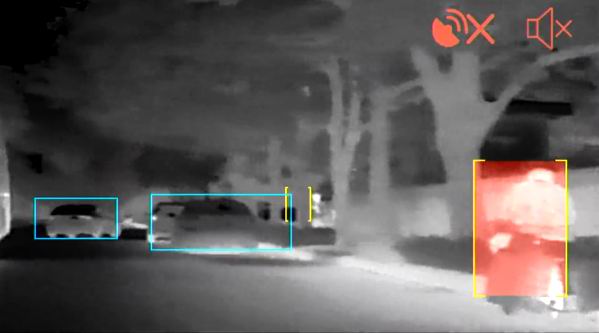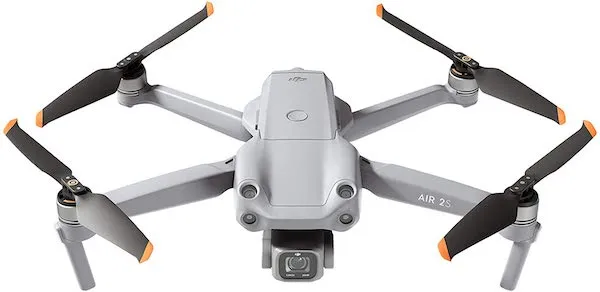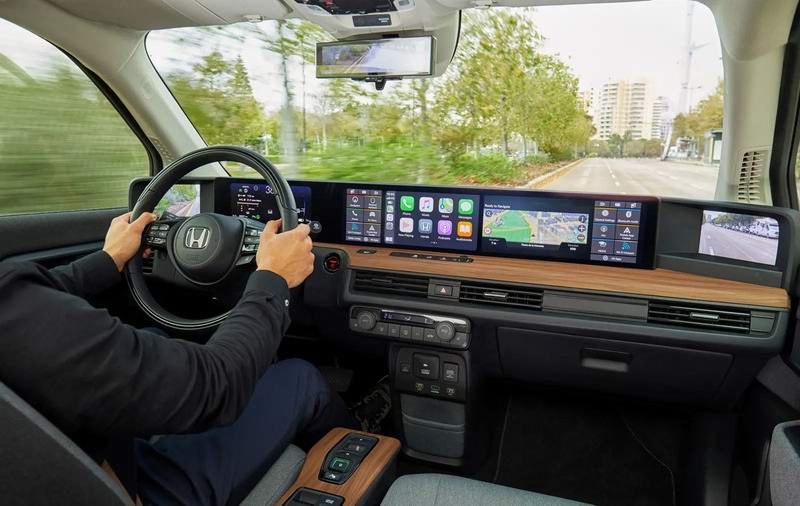Drive Safe with Thermal Imaging in Your Car
Thermal imaging technology has become increasingly popular in recent years, and for good reason. With its ability to detect infrared radiation and produce images based on temperature differences, thermal cameras have a wide range of applications, including in the automotive industry. Car thermal imagers and night vision systems use this technology to provide drivers with enhanced visibility and improved safety while driving. One of the main benefits of using a car thermal imager is its ability to detect heat signatures that are not visible to the naked eye. This means that drivers can see potential hazards on the road even in low-light or no-light conditions, such as pedestrians or animals crossing the road. In addition, thermal imaging can help identify hotspots in a car's engine or electrical system, which can indicate potential mechanical issues before they become major problems. Another advantage of using a car thermal imager is its ability to improve driving safety by providing real-time feedback on road conditions. For example, if there is ice on the road ahead, a thermal camera can detect the temperature difference between the road surface and surrounding areas and alert the driver to slow down or take caution. Similarly, if there is fog or smoke obscuring visibility, a thermal camera can penetrate these obstacles and provide a clear image of what lies ahead. In addition to improving safety, using a car thermal imager can also save drivers money in the long run by identifying potential issues before they lead to costly repairs. By detecting abnormal temperatures in various parts of the car's engine or electrical system, drivers can address these issues early on and prevent more serious damage from occurring. Thermal cameras are an essential tool for improving driving safety and preventing accidents. There are different types of thermal cameras available in the market, each with its own set of features and benefits. In this section, we will discuss the two main categories of thermal cameras for cars: uncooled vs. cooled thermal cameras and passive vs. active thermal cameras. Uncooled thermal cameras use microbolometers to detect infrared radiation emitted by objects in their field of view. These microbolometers do not require cooling, which makes them less expensive and more compact than cooled thermal cameras. However, they have a lower resolution and sensitivity compared to cooled thermal cameras. Cooled thermal cameras use cryogenically cooled detectors to achieve higher resolution and sensitivity than uncooled thermal cameras. They can detect even the slightest temperature differences between objects, making them ideal for detecting small animals or pedestrians on the road at night. However, they are more expensive and require regular maintenance due to their cooling system. When it comes to choosing between uncooled vs. cooled thermal cameras for your car, it ultimately depends on your budget and intended use. If you need a basic system that can detect heat signatures from other vehicles or obstacles on the road, then an uncooled camera may be sufficient. On the other hand, if you want a high-end system that can detect even the smallest temperature differences at long distances, then a cooled camera may be necessary. Passive thermal cameras rely solely on infrared radiation emitted by objects in their field of view to create an image. They do not emit any radiation themselves but instead capture the existing radiation around them. This makes them ideal for surveillance applications where stealth is important. Active thermal cameras emit their own infrared radiation to illuminate objects in their field of view and create an image based on the reflected radiation. This allows them to produce clearer images in low-light conditions or when there is no existing infrared radiation available. When it comes to choosing between passive vs. active thermal cameras for your car, it depends on your specific needs and preferences. Passive systems are generally cheaper and more energy-efficient since they do not emit any radiation themselves but rely solely on existing sources of infrared radiation around them. Active systems, on the other hand, provide better image quality in low-light conditions or when there is no existing infrared radiation available. Thermal imaging technology has revolutionized the way we drive by providing us with a clear picture of our surroundings even in low-light conditions. This has significantly improved driving safety, as it allows drivers to detect obstacles and hazards that would otherwise be invisible to the naked eye. For instance, thermal cameras can detect animals on the road, pedestrians crossing the street, and other vehicles in blind spots. This is especially useful when driving at night or during adverse weather conditions such as fog or heavy rain. Moreover, thermal imaging can also help drivers detect potential mechanical issues before they become major problems. By detecting changes in temperature, thermal cameras can identify overheating engines, malfunctioning brakes, and other issues that could cause accidents on the road. This early detection can save drivers time and money by allowing them to address these issues before they escalate into more serious problems. Another benefit of using a car thermal imager and night vision system is that it reduces accidents and collisions on the road. By providing drivers with enhanced visibility, thermal cameras allow them to react quickly to any potential danger on the road. This includes not only obstacles and hazards but also erratic behavior from other drivers. For example, if a driver suddenly swerves or changes lanes without signaling, a thermal camera will pick up on this change in temperature and alert the driver to take action. Thermal imaging cameras for cars are an investment, and like any other investment, it is important to take care of them properly. Regular cleaning and maintenance can go a long way in ensuring that your car thermal imager lasts for years to come. Firstly, it is important to keep the lens clean and free from debris. This can be done using a soft cloth or brush, but avoid using water or harsh chemicals as they may damage the lens coating. Additionally, make sure that the camera body is kept dry at all times. Moisture can cause damage to internal components and affect the accuracy of the readings. Proper storage and handling can also extend the life of your car thermal imager. When not in use, store it in a cool, dry place away from direct sunlight or heat sources. Avoid dropping or exposing it to extreme temperatures as this could damage internal components or cause calibration issues. Correct usage and interpretation of thermal images is crucial for getting accurate readings and making informed decisions while driving. Before using your thermal imager on the road, read through the user manual thoroughly to understand how it works and what different readings mean. It is also important to calibrate your camera regularly as this ensures that it provides accurate temperature measurements. In conclusion, investing in a car thermal imager and night vision system is a smart decision for any driver or car enthusiast. The benefits of this technology are clear: improved driving safety, prevention of accidents, and increased visibility in low-light conditions. With the different types of thermal cameras available on the market, it's important to choose one that fits your specific needs and budget. Regular maintenance and proper use of your car thermal imager will ensure its longevity and effectiveness. Overall, incorporating thermal imaging into your driving experience can make a significant difference in your safety on the road. So why not consider adding this innovative technology to your car today? Drive safe with the peace of mind that comes with having a car thermal imager by your side. Revolutionize Your Car with Z2: 3-in-1 Wired to Wireless CarPlay Converter Transform Your Car with Z1A: The Ultimate Wireless Android Auto Converter Improve Your Nighttime Driving with Car Night Vision Technology Upgrade Your Nighttime Driving with Car Night Vision Enhancement Elevate Your Nighttime Driving with Car Night Vision Upgrade
Introduction
Types of Thermal Cameras for Cars

Uncooled vs. Cooled Thermal Cameras
Passive vs. Active Thermal Cameras
How Thermal Imaging Improves Driving Safety

Tips for Maintaining and Using Your Car Thermal Imager
Conclusion
See Also
 CN
CN English
English





